The Great Art of Light and Shadow
"The truth is, this Jesuit, as generally the most of his order, have a great ambition to be thoughte the greate and learned men of the world; and to that end writes greate volumes, on all subjects, with gay pictures and diagrams to set them forth, for ostentation And to fill up those volumes, they draw in all things, by head and shoulders; and these too for the most part, stolen from other authors. So that if that little, which is their owne, were separated from what is borrowed from others, or impertinent to their present arguments, their swollen volumes would shrink up to the size of our Almanacks. But enough of these Mountebankes*."
[Robert Payne in a letter to Gilbert Sheldon, 1650]{*mountbanke = charlatan}
"Whatsoever Mr. Huygens & others say of Kircher, I assure you I am one of those that think the Commonwealth of learning is much beholding to him, though there wants not chaff in his heap of stuff composted in his severall peaces, yet there is wheat to be found almost every where in them. And though he doth not handle most things fully, nor accurately, yet yt furnishes matter to others to do it. I reckon him as usefull Quarries in philosophy and good literature. Curious workmen may finish what hee but blocks and rough hewes. Hee meddles with too many things to do any exquisitely, yet in some that I can name I know none goes beyond him, at least as to grasping of variety: and even that is not onely often pleasure but usefull."
[Sir Robert Moray in a letter to Henry Oldenburg, 1665]

Frontispiece: 'Ars Magna Lucis et Umbrae'
"Angels form an arc under the central light, which is YHWH, the Hebrew letters for God. Daylight is the source of direct light, refracted light, and light reflected by night (on right). Divine authority, a hand writing a book that absorbs light directly from the source of all light, oversees the daylight, and it is a little higher than Reason, the hand writing a book above the night, which receives a more modest eye's light. Below daylight is Profane Authority, which receives only a lantern's light; below Reason is Sense, which points to an image produced by a telescope. Emperor Ferdinand enters the picture as one of Kircher's patrons." [source]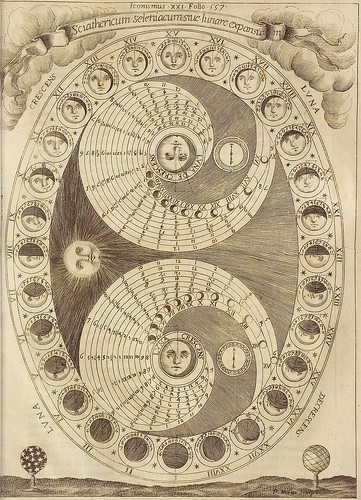
‘The Selenic Shadowdial or the Process of the Lunation’
"The spirals show the length of the Moon’s appearance in the sky, with its rising and setting. The scheme gives the Moon twenty-eight phases and the engraver, Pierre Miotte, has reversed the appearance of the waxing and waning moons for the northern hemisphere."
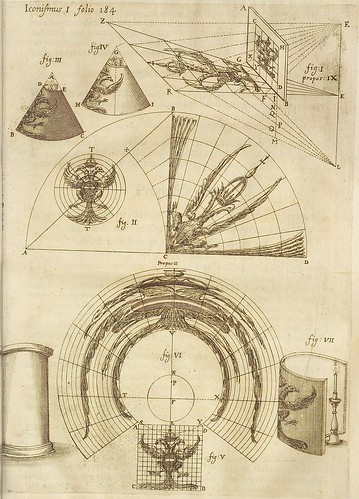
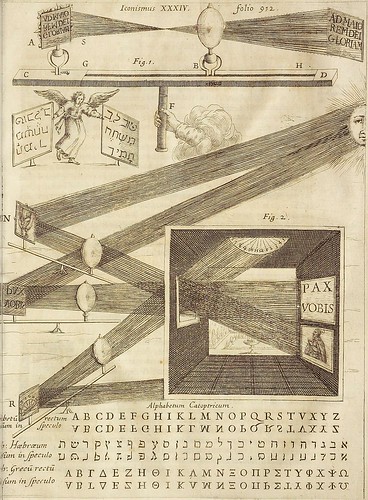
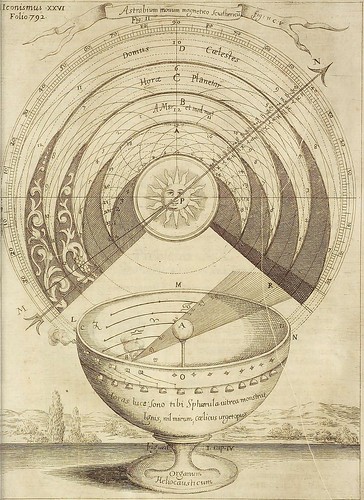


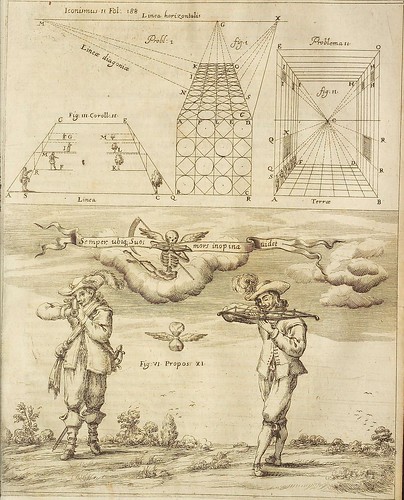

Universal horoscope of the Society of Jesus
"Composite sundial in the form of an olive tree. When hung vertically, with pins placedat the nodes of the tree, this allows the time in each Jesuit province to be read. The base of the tree represents Rome. Additionally, the shadows of all the pins align to spell "IHS", the logo of the Society of Jesus."
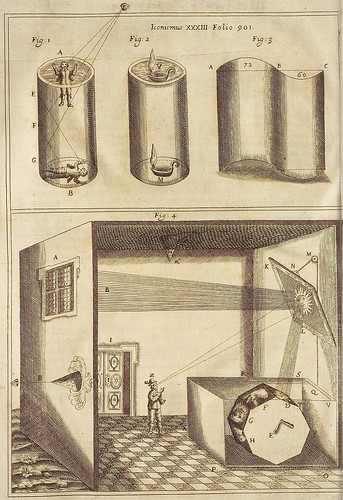
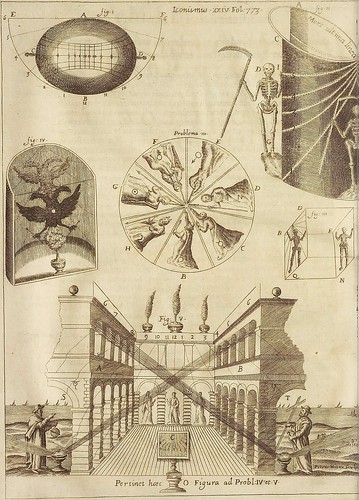


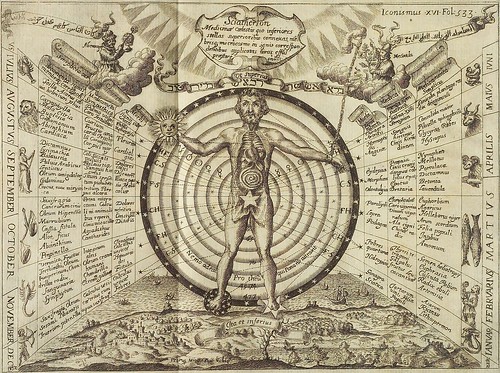
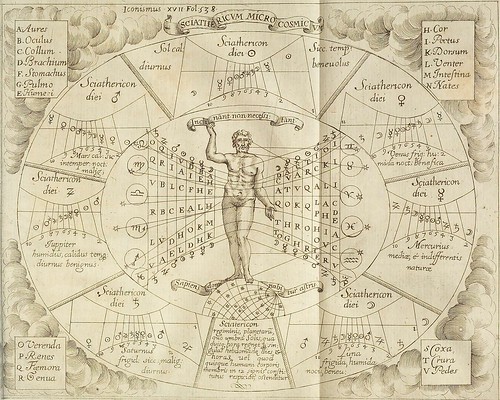
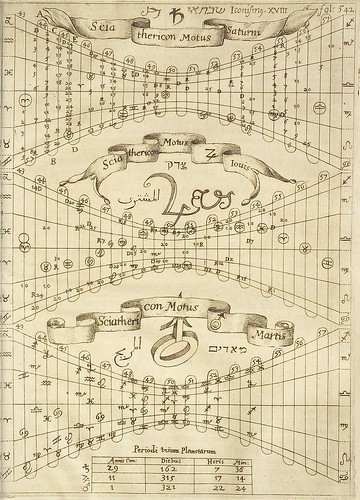
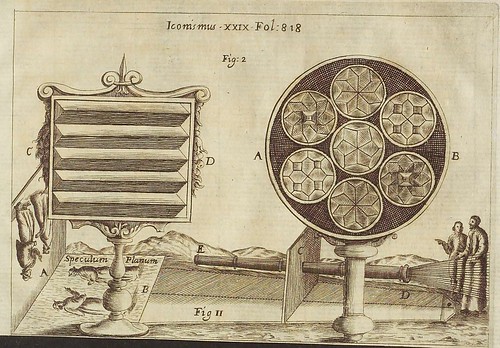
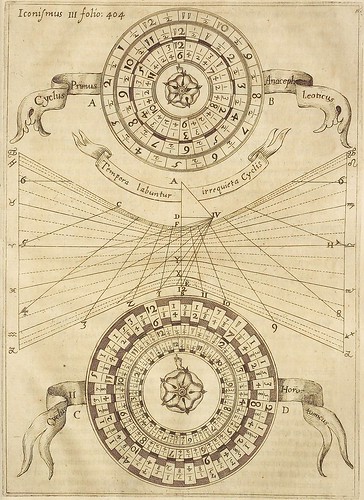
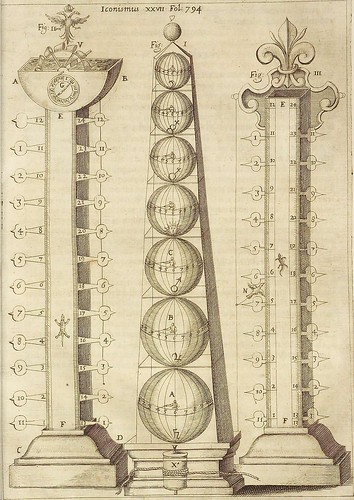
{click on the image then click 'All Sizes' for enlarged versions.
There are a few more illustrations saved in this set}
There are a few more illustrations saved in this set}
Whether you consider Father Athanasius Kircher (1601-1680) to be the embodiment of polymathic inquisitiveness or an overrated plagiarist who contributed nothing but 'chaff' to the intellectual life of the 17th century, the abundance of illustrations throughout his works remain enigmatic curiosities nevertheless.
Kircher's massive treatise from 1646, 'Ars Magna Lucis et Umbrae', contains observations on the nature of light, lenses, mirrors, sundials, astrology and (Ptolemaic) astronomy and related topics. It also includes some of the earliest descriptions of the camera obscura and the magic lantern.
It is no coincidence that this site periodically revisits the many and varied works of Fr. Kircher, for BibliOdyssey would not exist had it not been for my chance discovery of his eccentric legacy about three years ago. It's the gift that keeps on giving.
- The 'Ars Magnus Lucis et Umbrae' illustrations above from come from the copy hosted by Herzog August Bibliothek, Wolfenbüttel.
- The Max Planck Institute's ECHO site have a large range of books by Athanasius Kircher [including 'Ars Magnus Lucis et Umbrae').
- Previously: Kircher's Magnetism; Sampling Kircher; Musurgia Universalis; Connecting with China; Artificial Magic; Plethora.
- A Short History of the Shadow: An Interview With Victor I. Stoichita at Cabinet Magazine [book / preview].
- About the construction of The Magic Lantern or The Sorcerers Lamp (click 1/2way down after reading the commentary)
- 'Athanasius Kircher: The Last Man Who Knew Everything' by Paula Findlen, 2004. [audio interview with author / preview / review]
- The quotes at the beginning of the entry come from: 'Between the Demonic and the Miraculous: Athanasius Kircher and the Baroque culture of machines' by MJ Gorman, 2001.



















5 comments :
Once again I am fascinated by the combination of decoration and instruction in these pages! A superb find. And thank you for providing links to the sources for further scrutiny.
fantastique !
A bientôt...:)
great - as always and a source of inspiration
Thanks for mentioning more of my favourite Jesuit, but there's a typo in the penultimate title (Lucis being elided).
Can we have some Arca Noe?
Thanks for that. I should add an 'inspired by Kircher' in the header. He is perhaps the most frequently appearing character on this blog (I'm guessing), so I'm a little bit reluctant to return to that (admittedly productive) vein of visual history. But never say never and watch this space. Noah may turn up here one day..
Post a Comment
Comments are all moderated so don't waste your time spamming: they will never show up.
If you include ANY links that aren't pertinent to the blog post or discussion they will be deleted and a rash will break out in your underwear.
Also: please play the ball and not the person.
Note: only a member of this blog may post a comment.